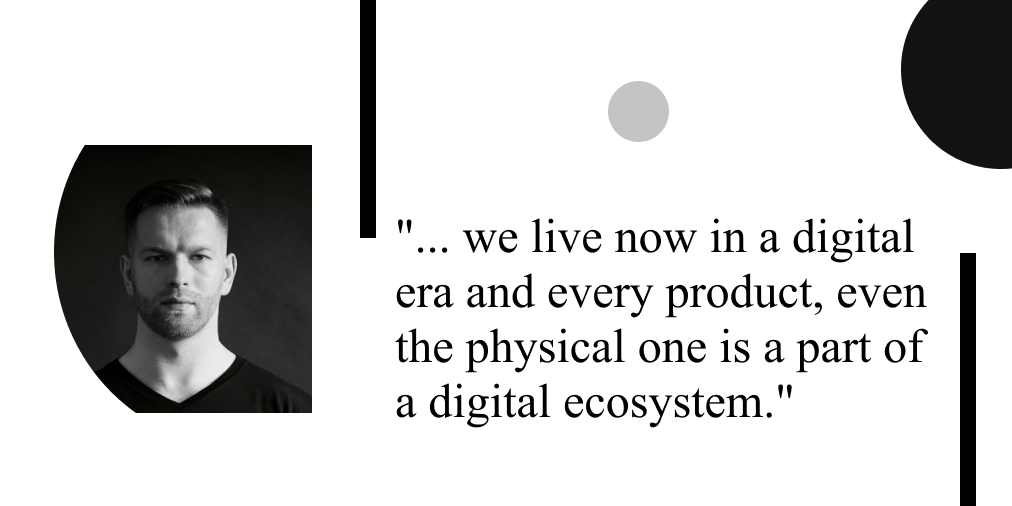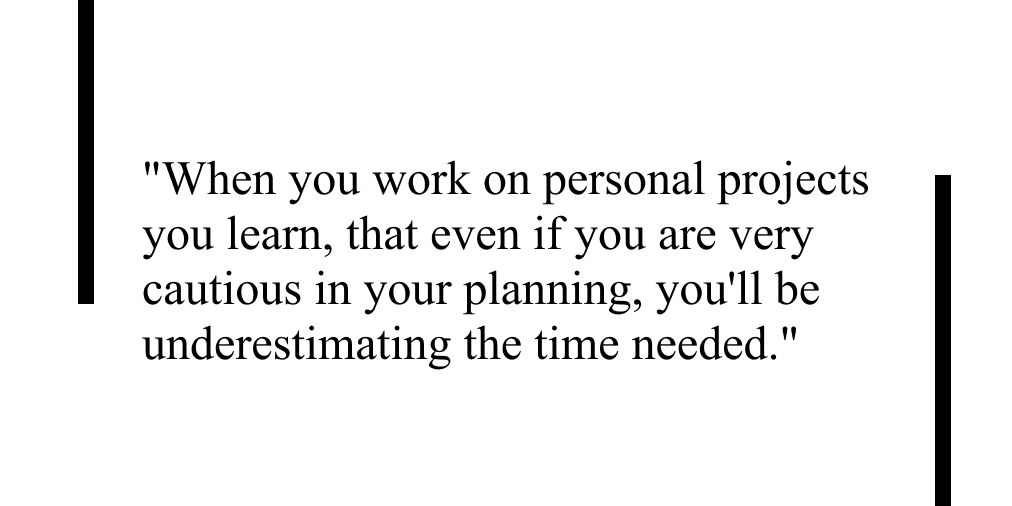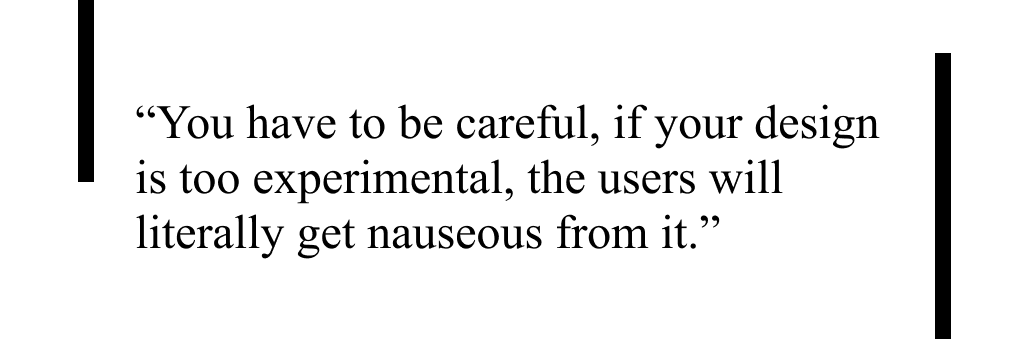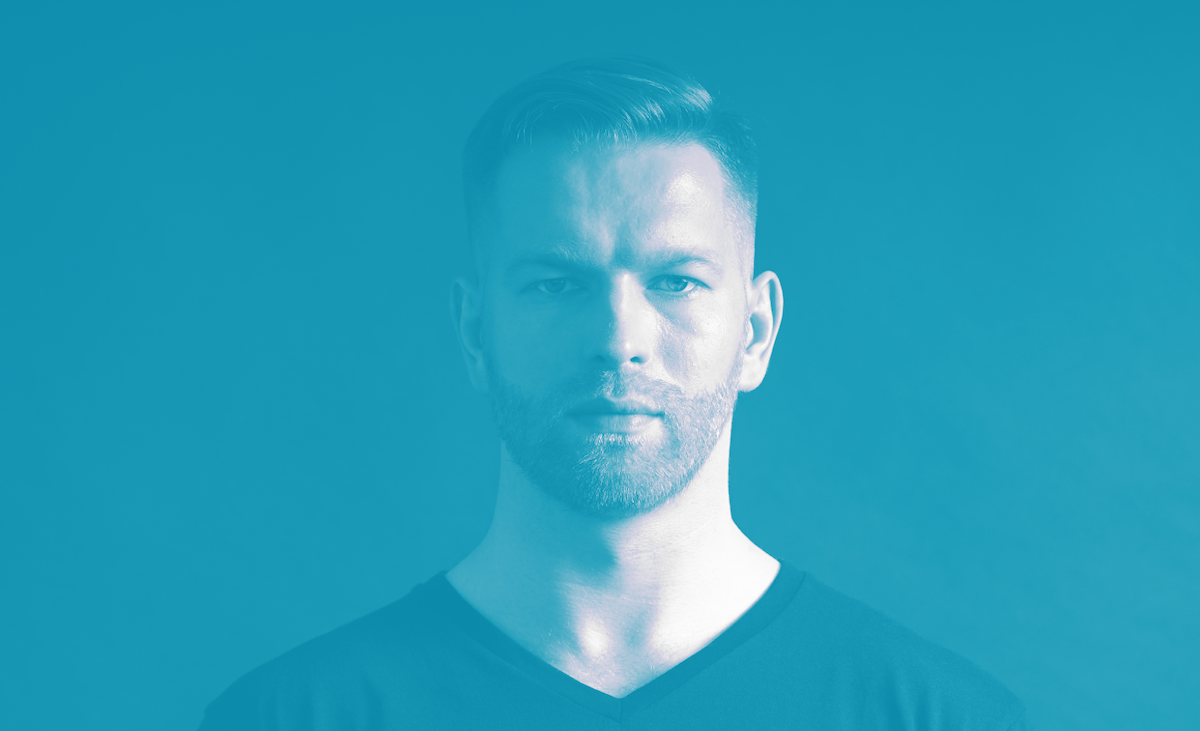Through our work we meet some amazing designers, so we decided to introduce "Sympli talk" - a set of interviews with designers that love what they do and inspire us. We start with Oleg Frolov, and this talk is about designing for VR and the evolution of the interaction design.
[indistinct clattering]
The call is started, but the sound doesn't want to work, so we start a non-verbal conversation about fixing it. Soon we can hear each other and move to introductions.
Sympli: Let's start with who you work for, and what do you do, shall we?
Oleg: Sure. Now I work in a company called Arrival; it is developing a new concept for transport. This is not just about the transport itself but also about the digital infrastructure around this.
Sympli: By transport do you mean just cars, or it's everything, scooters, buses?
Oleg: Well, Arrival announced buses and vans.
Sympli: Is it a new project?
Oleg: The project is new, but the company has been here for a while.

Sympli: What do you do on the project, how do you understand the Product Designer role? Looks like There is ambiguity in understanding the concept in the in industry.
Oleg: Yes, I think in the beginning there was confusion because before, product designer meant a designer that was working on a physical object. We also call it an industrial designer. But we live now in a digital era and every product, even the physical one is a part of a digital ecosystem. That's why designers that work on this digital part of the product can be called product designers. For example, here is a speaker that I have, and it's not only a speaker, there is an app, the full ecosystem to control it. Any physical product is a manifestation of a more global idea.
Sympli: How did you get to this point in your career, what does your path as a designer looks like?
Oleg: I started in my own design studio, it was in Komsomolsk-on-Amur, the clients were mostly from big cities: Moscow and St. Petersburg. Then I decided to move to St. Petersburg. Somewhere around that time, mobile design emerged and I loved it! You could now get the data from the device: acceleration, gyroscope, and use it to make the user experience better. It was really interesting to me, how can you use a device that is always next to you. This means you can design things that will become an inevitable part of human life. So I gradually started working on mobile interfaces, then I moved to Moscow, worked in Yandex, Avito, in a startup called Chudo, and then - Arrival.
Sympli: Impressive! How did you get interested in VR?
Oleg: I think it's the same for me as a transition from web interfaces to mobile. Mobile interfaces are much reacher in user experience, then just web. In the case of VR, you have even more layers and possibilities for experimentation. There are just more things that you can use to interact with the interface - your own hands, special gloves, tons of different gadgets that can erase that border between reality and VR. You don't have to look through a screen anymore, you're inside that realm immediately and this is on a different level of interaction. So from the perspective of an interface designer, this is an understandable linear evolution.
Sympli: So your main inspiration is the new types of interaction and their effect on the experience?
Oleg: yes! Plus, there are additional layers to that. I was recently designing a controller, well, a representation of the real controller that you hold in your hand, that you can see in VR. And you need to take to account the ergonomics, the physiology, the mechanics of your hands. Well, the stuff you would know working in industrial design on the physical controller. This broadens your knowledge and skillset tremendously.

Sympli: Your website and Dribbble have a lot of experiments on UX components, is this you exercising your design muscle? Or is it a part of some bigger project that you are planning? Or both?
Oleg: Both, part of them I just made and forgot about them, because otherwise this idea will keep coming to you in your head, and occupy your "memory space". If you make it - it goes away. There are a lot of concepts like this, and some of them are from classic UX, like dropdowns, and this is a great exercise in itself. Some are a part of my own projects - now I'm making my own VR Editor. It is a good practice for training your design pragmatism because for designers it's often hard to estimate the time and effort need to launch products. When you work on personal projects you learn, that even if you are very cautious in your planning, you'll be underestimating the time needed. You always need to make everything very simple, because the systems tend to get more complex with time and the project you wanted to finish in 2 months can take 2 years. It's always better to make something good and small, then big and undercooked.
Sympli: Your website says "humanize design". Why humanize?
Oleg: Well, this is actually quite trivial. Our main goal is not to put the human in front of some buttons and make him learn them. We're as designers are trying to bring humans into this process. Our goal is to make this interface, or interlayer between the computer and the human so that the human doesn't have interaction problems and so that the machine is perceived as another human. It should learn the human way of communicating. To sum up: we're humanizing machines and making them easier to understand and more friendly.
Sympli: What are the specific challenges of designing for VR? What conflicts are there to solve?
Oleg: The main challenge is that for other interfaces we already have a system of abstract concepts in place - for example, the blue rectangular is a button. This whole system is a set of abstractions with its own logic, that is easy to operate. We can reuse 2D logic in VR, but this is nothing new and is not using the possibilities of this new realm.

The main challenge of the interaction design in VR is that even though we know it's digital and just looks kind of our real world, the connection of our senses with reality is really strong. If you see something that has volume, you have a preconception that we can take this object. Then comes physics: we all know how the material affects the weight, if I drop this object it will fall at a certain speed. We already have this experience, and when we see something working not as our brain expects we experience nausea. This is the same as the motion sickness works - you see that you move in VR, but your body is still, your vestibular apparatus is sending you the signals that you are not moving. Then the ancient mechanism starts working: if your eyes see your movement, and you're still - you ate something toxic and you need to get this out of your body. You have to be careful, if your design is too experimental, the users will literally get nauseous from it.
Sympli: It's has both great symbolic and real meaning. When users' mental model does not match your design they get nausea and need to lay down. Imagine this in web interfaces 😂 that would be interesting.
Oleg: Yes, but this also make it very easy to test!
Sympli: Exactly, this was supposed to be my next question - how do you test?
O: It's very easy. In the classic interfaces, you easily fall into the taste trap. From the VR side, it's easier - if you're not nauseous - the design is good enough 😂 Well', of course, this is not all, the context and the environment are really important too. If you take a proper recognizable element and put it in some endless room with no walls, a fog, some dust - you'll create anxiety. The brain will ask you: where are you, what is going on. The brain has nothing to tie you down to and the anxiety kicks in and this is not what we want to design for the user. This is why I moved away from modernist experiments and started creating recognizable objects, a chair, a window - so the user understands - ok, I'm in a room, a wild animal won't jump on me from the fog to eat me, or someone's hand won't suddenly land on my shoulder.
Sympli: How do the tests look like? There is some group of people that are using the sets? Researchers, who record their feedback and feelings?
Oleg: I think somewhat like this. I'm using myself and my friends that have these devices. There are also ways to publish your test build to the community and there always be people that would participate and will give you feedback.
Sympli: What was one of the recent problems that you faced in VR design and how did you solve it? The context is the operation of this whole thing - menus, actions.
Oleg: There is one classic problem that I also faced. I was working on a movement system. II wanted to make the interaction flawless and smooth like we're used in 2D. It all looked good in the simulator, but when you experienced it in VR you've got motion sickness. So I made the movement discrete - boring but doesn't make you nauseous, the image quickly changes to a different one. This is how almost everyone is treating this problem now. Even if you turn around, there is a certain step 10" or 15" is used. What I also discovered is that in 2D interfaces we try to minimize the menu opening time, and in VR interfaces you need to meet the expectations of the users. If the button looks like it is big and made of metal - it should behave according to real-life physics. Most of the time I use Physic Best to create this.
Sympli: Do you always need a controller for VR experience?
Oleg: Good question, mostly the answer is yes, but some headsets support the hand tracking. For example, Oculus released the hand tracking last year, you just need a helmet and your hands to interact with the virtual enviroment. You can map any gesture to any action - you can snap your fingers and this will call out the menu. This is a serious complexion from the interaction point of view, it's not a rectangle with a couple of states anymore. There are many more opportunities to explore.
Also, there is no convention on how to use this, and quite often you just use classic interfaces to create less friction for a user. It makes sense because it takes time to learn new interaction flows, and there is not much time for proper testing of your interface experiments. It makes sense, but it's boring.
Sympli: So, you'll see some recognizable elements and interactions, for example the cross on the upper right corner of the window will close it?
Oleg: Yes. Some creators are nevertheless experimenting with this, for example, Gravity Sketch - the app for creating graphics in VR modeling or industrial design. They are doing interesting things, for example, the gallery is not just rectangles, it's an object, you can take it, throw it and it'll open. Some developers are definitely pioneering this field.
Sympli: Where do you think VR is headed? In which direction do you personally want or plan to evolve?
Oleg: I think the human-machine interactions are going to another level - we will have not the virtual reality, but some sort of "real virtuality" - designing devices that would interact with the nervous system directly, so we'll be designing these types of experiences. I was always interested in this, but the complication is - the amount of knowledge you need to have is tremendous. At 20 I thought, ok, I'll study 5 more years and then I'll relax, and now I understand that I'm just starting to learn.
Sympli: And it's a perpetual process.
Oleg: Exactly, and It's extremely important not to get scared of it and learn to enjoy this process. Small steps, experiments, and iterations will help.
Sympli: Where do you want to apply all the knowledge that you have?
Oleg: Possibly create or better some interactions system, save the world 😂 to experiment, make something interesting.
Sympli: What was the main outtake from experiments that you did?
Oleg: Well, the user is currently perceived as this serious person, that wants to do nothing, you need to chew everything for them. But people like having fun, they like sometimes use some unusual interface, because they are curious and they enjoy it. It's easy to make a simple interface, you take recognizable and tested elements, combine them in a certain order, and it's all done, it does the job. To me, the discovery was that people are willing to spend more time on the interface if it brings them joy. Humans are emotional and these emotions are a part of their interaction with your product. So the criteria are not the speed, but the emotions and value that person derives from this experience.



